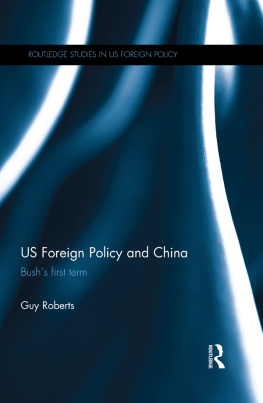Copyright 1998 by Princeton University Press
Published by Princeton University Press, 41 William Street,
Princeton, New Jersey 08540
In the United Kingdom: Princeton University Press, Chichester, West Sussex
All Rights Reserved
Library of Congress Cataloging-in-Publication Data
Hart, David M., 1961-
Forged consensus : science, technology, and economic policy in the
United States, 1921-1953 / David M. Hart.
p. cm.
Includes bibliographical references and index.
ISBN: 978-0-691-14654-6
eISBN 978-1-400-83242-2
1. Science and stateUnited StatesHistory. 2. Technology and
stateUnited StatesHistory. 3. United StatesEconomic policy
History. I. Title.
Q127.U6H32 1998
338.973'06dc21 97-43913
http://pup.princeton.edu
R0
Preface
SCIENCE AND TECHNOLOGY policy is not very well understood. Policy-makers and scholars outside the field think it obscure and esoteric. For most within the field, it seems idiosyncratic, detached from the rest of American politics. These impressions need to be corrected. Science and technology impinge on almost every aspect of public life in the United States. And science and technology policy is not made in particularly strange ways. It is affected by many of the same ideas, institutions, and interests that affect other federal policies.
This book is my contribution to making the study of science and technology policy a normal part of the study of American politics, particularly of American political development, and vice versa. It aims to undermine the fields creation myth, which says that postwar science and technology policy sprang full-blown from the mind of Vannevar Bush, was written down in Science, the Endless Frontier in 1945, and that the past fifty-odd years have merely been implementation. Bush was brilliant, as an engineer and administratorand politician. It is a mark of his success in this last role that the creation myth still holds practitioners and analysts in its grip. If we can let go of this myth and see Bush in the light of normalcy and the New Deal as well as of the war, of Robert Taft and Curtis LeMay as well as of Harley Kilgore, then we can make much better sense of what happened and why. Perhaps equally important, we can also understand better what might have happened but did not.
This project began as a dissertation in the MIT Political Science department. Each member of my dissertation committee, Ira Katznelson, Gene Skolnikoff, and Dick Samuels, provided a different expertise and a different form of encouragement to me, and each made a real difference. I owe special thanks for support and incisive criticism to two fellow graduate students, Brian Burgoon and Wade Jacoby. My work, like all work, builds on earlier scholarship; I have been particularly influenced by the work of Ellis W. Hawley and Daniel J. Kevles. I have benefited from comments by Daniel Bell, Bruce Bimber, Lewis Branscomb, Harvey Brooks, Owen Cote, Hunter Dupree, Henry Ergas, Richard Florida, Marshall Ganz, John Gerring, Eugene Gholz, David Guston, Peter Hall, Roger Haydon, Maurice Holland, Jr., Chris Howard, Allen Kaufman, Dan Kryder, George Lodge, Bill Mayer, Eileen McDonagh, Mike McGeary, David Mindell, Richard Nelson, Larry Owens, Andrew Polsky, Harvey Sapolsky, Mike Scherer, Bruce Seely, Phil Smith, Roe Smith, Jessica Wang, Charlie Weiner, Gregg Zachary, and two anonymous referees at Princeton University Press. I received feedback on the work from participants at meetings of the American Association for the Advancement of Science, American Political Science Association, Boston-Area Workshop on American Political Development, Hagley Museum and Library, Kennedy School of Government Center for Business and Government, Kennedy School of Government Politics Research Group, Kennedy School of Government Faculty Research Seminar, Northeastern Political Science Association, and Society for the History of Technology.
I have been blessed with financial support from the MIT Political Science Department, the Center for Science and International Affairs at the Kennedy School of Government, the MIT Industrial Performance Center, and the Herbert Hoover Presidential Library. Since 1994 the Kennedy School of Government has provided a paycheck and a slush fund, for which I am most grateful. I owe a debt of gratitude to hardworking archivists around the country (at the locations listed in the bibliography) for their unfailing assistance and courtesy. Maryann Barakso and Dana Weinberg assisted in the research.
Gene Skolnikoff has been my guardian angel, and I cannot repay him for watching out for me. In an early comment on my work, he remarked that it was either brilliant or a house of cards. I leave it to the perspicacious reader to decide which of theseor something entirely differentapplies to the final product.










